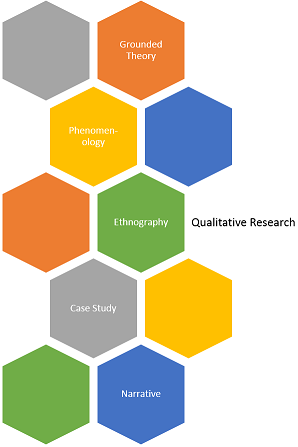 If you're interested in health policy changes, you can take advantage of Himmelfarb Library's online resources to help you keep up to date on what's going on. These online resources provide access both to the academic literature and legislative news and tracking resources:
If you're interested in health policy changes, you can take advantage of Himmelfarb Library's online resources to help you keep up to date on what's going on. These online resources provide access both to the academic literature and legislative news and tracking resources:
CQ HealthBeat: Continuously updated information on health policy legislation and regulations. Includes real-time news, information on rules and regulations, legislative tracking, and schedules of forums and events.
Health Policy Reference Center: journals, books, magazines, and trade publications on health policy issues including access and delivery, administration, financing and economics, planning, quality, reform, health services research, and public health.
CQ's Trump Tracker: tracks the action on Donald Trump's campaign commitments with background, options available, what to watch, links to bills, information about key players and more.
Proquest systems which include RefWorks will be down for a brief period this weekend for maintenance. The systems will unavailable on Saturday, January 28 from 10:00 PM EST through Sunday, January 29 7:00 AM EST.
 Clinical eCompanion brings together freely-available medical information into one searchable database, providing for a wide array of resources applicable to primary care. Clinical eCompanion includes drug information, free full-text PubMed articles, patient education materials, USPSTF recommendations, as well as an ICD-10 lookup tool. With these different tools, Clinical eCompanion provides searchable access to clinical information which may be especially useful to clinicians who do not have access to a medical library.
Clinical eCompanion brings together freely-available medical information into one searchable database, providing for a wide array of resources applicable to primary care. Clinical eCompanion includes drug information, free full-text PubMed articles, patient education materials, USPSTF recommendations, as well as an ICD-10 lookup tool. With these different tools, Clinical eCompanion provides searchable access to clinical information which may be especially useful to clinicians who do not have access to a medical library.
Clinical eCompanion was created by the health sciences librarians of the University of Pittsburgh, with the support of the National Library of Medicine, the National Institutes of Health, and Department of Health and Human Services.
Take a look at our other primary care resources here.
 Convenience sampling or random sampling? Simple random sampling - or stratified or clustered random sampling? Academic Medicine recently published an infographic to describe these methods of sampling and their use in health sciences education.
Convenience sampling or random sampling? Simple random sampling - or stratified or clustered random sampling? Academic Medicine recently published an infographic to describe these methods of sampling and their use in health sciences education.
This graphic provides a description of each method of sampling, as well as a snapshot of the pros and cons.
Crandall, S., Bushardt, R., & Ip, E. (2016). Key Sampling Issues in Quantitative Research in Health Professions Education. Academic Medicine, 91(12), e6.
 Academic Medicine recently published an infographic to differentiate qualitative research methodologies commonly used in health sciences education.
Academic Medicine recently published an infographic to differentiate qualitative research methodologies commonly used in health sciences education.
This graphic provides a useful snapshot of the goal, unit of study, research question framing, data analysis approach, and potential study outcome for each methodology.
 In recent years, a new trend in quantifying the impact of scholarly output has emerged called Altmetrics.
In recent years, a new trend in quantifying the impact of scholarly output has emerged called Altmetrics.
Whereas the traditional measure of importance for a scientific publication is the number of times cited within other scholarly publications, Altmetrics considers a completely new set of indicators of impact. An article’s Altmetrics score is determined by its number of mentions across a variety of social media platforms including Facebook, Twitter, and blogs as well as mentions in traditional news outlets. Mentions in different platforms are weighted differently, so a single tweet does not count the same as a mention on a blog. Mentions are weighted and tallied giving a composite Altmetrics score that is often presented within a donut composed of various colors that give a visual indicator of the sources of these mentions.
A recent ‘Viewpoint’ article in JAMA entitled The Rise of Altmetrics looks at how Altmetrics appears to reward articles with different characteristics than those that are highly rated according to traditional citation analysis. While looking at the top 100 articles ranked by Altmetrics scores during the past several years, the authors found that there was often little to no link between a high Altmetrics score and the number of citations an article receives. This finding indicates that these two measures of scholarly impact reward different things. In the author’s analysis of the top 100 Altmetrics articles they found a significant number which related to topics with broad public interest such as diet, exercise, and the vaccine-autism controversy as examples.
Their observations have important ramifications for those wishing to quantify scholarly impact as it shows that the choice between Altmetrics and traditional citation analysis will necessarily cause different publications to rise to the top. It’s unclear to what extent Altmetrics will influence decision-making processes such as tenure in future years but, based on the findings of this article, it will be important for decision makers to understand and define the characteristics of scholarly publications they wish to measure and to pick a metric accordingly.

Have you noticed the changes to the Health Information @ Himmelfarb search box on the library’s home page? Options to help you target the results you want faster now appear below the search box.
Use the Advanced Search option to do more complex searches and see further search limits. It is located to the right of the new buttons. Contact the Information Desk at 202-994-2850 or use the chat box on the home page for assistance with searching Health Information @ Himmelfarb.
Using Documents2Go to get book and articles from other libraries has never been easier!
Effective this morning, we've configured Docs2Go to work with your GW NetID and password -- no need to keep track of a separate account.
We hope you enjoy the convenience! If you have difficulties with your account, please contact ILL staff at mlbdoc@gwu.edu.